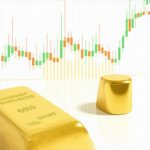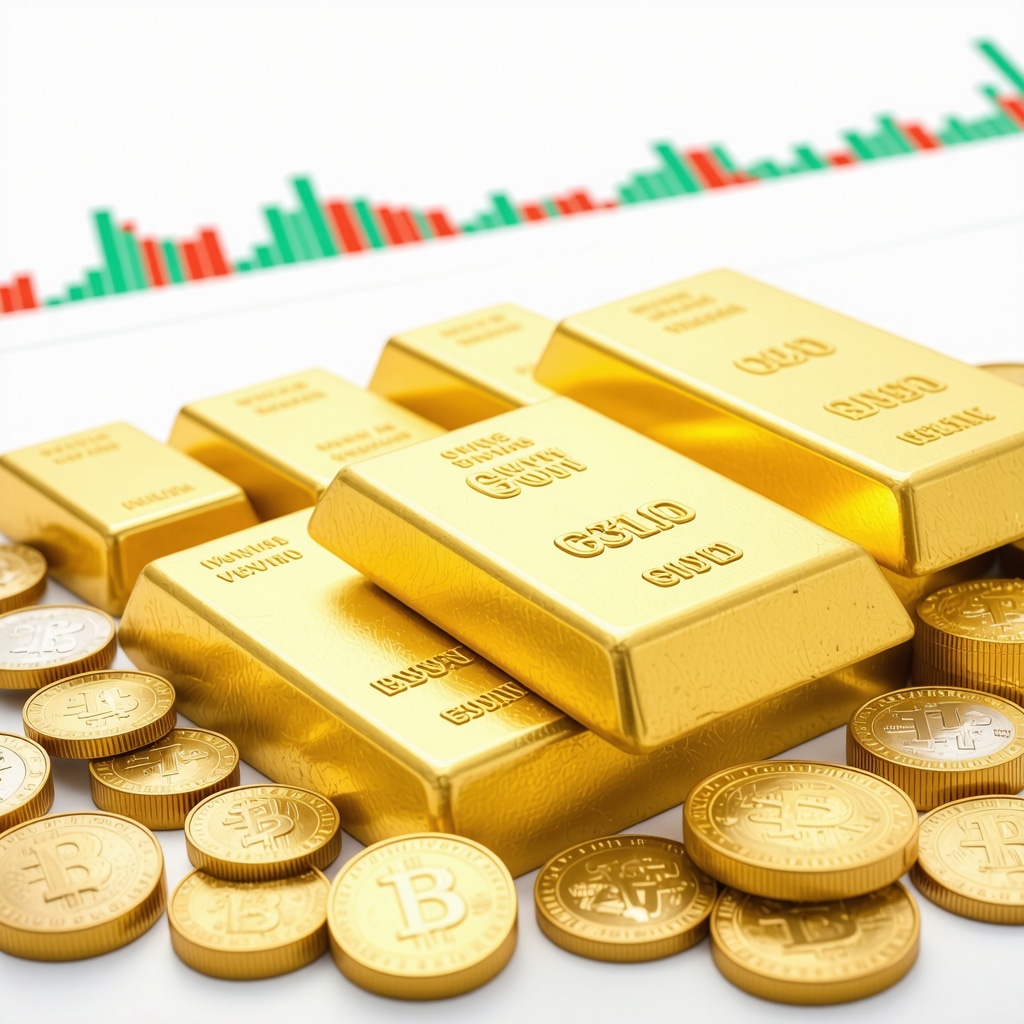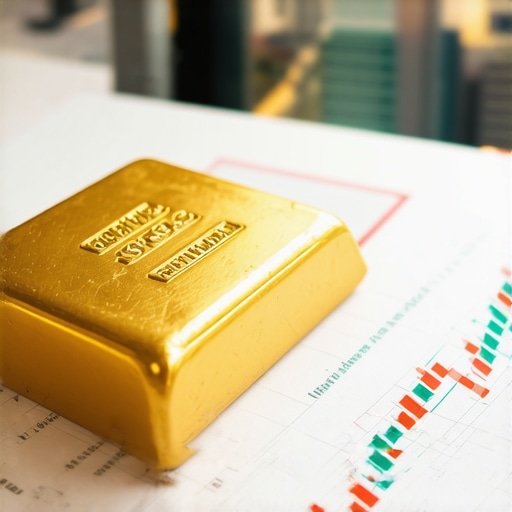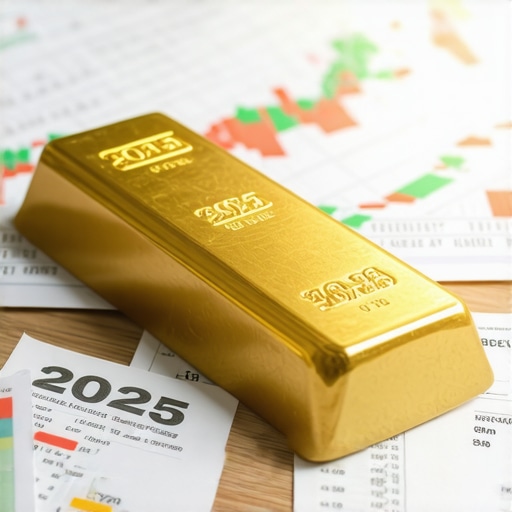Strategic Investment in Gold Mutual Funds & ETFs: Navigating the 2025 Landscape
In an era characterized by economic volatility and shifting monetary policies, gold remains a cornerstone of sophisticated portfolio diversification strategies. As financial markets become increasingly interconnected, understanding the nuances of gold mutual funds and ETFs becomes essential for investors seeking to optimize returns while hedging against inflation and geopolitical risks. This article explores the advanced landscape of gold investment vehicles in 2025, offering insights rooted in market analysis and expert foresight.
Why Gold Continues to Be a Critical Asset Class in 2025
Gold’s unique role as a non-yielding, tangible asset ensures its position as a safe haven during economic downturns. Recent studies, such as those published in the Journal of International Financial Markets, Institutions & Money, highlight gold’s resilience amid inflationary pressures and currency fluctuations. Moreover, central bank policies, especially regarding gold reserve adjustments—detailed in this report—are indicative of its strategic importance in global monetary systems.
Evaluating the Top Gold Mutual Funds & ETFs for 2025
What criteria distinguish the most promising gold funds in a complex market?
Selection criteria include fund management expertise, expense ratios, liquidity, and the fund’s exposure to physical gold versus derivatives. Funds such as the SPDR Gold Shares (GLD) and iShares Gold Trust (IAU) exemplify high liquidity and transparency, making them suitable for both institutional and retail investors. For mutual funds, options like the Gold and Precious Metals Fund offer active management with a focus on diversified holdings in mining stocks and physical gold assets.
Investors should also consider the impact of gold supply-demand dynamics, as detailed in industry reports, which influence gold prices and, consequently, ETF and mutual fund performance.
Integrating Gold Funds into a Diversified Portfolio: Advanced Tactics
Optimal portfolio construction involves balancing gold assets with equities, bonds, and alternative investments. Utilizing strategic asset allocation models, such as mean-variance optimization, can enhance risk-adjusted returns. Furthermore, timing market entry and exit points, guided by trading techniques and macroeconomic indicators, is paramount.
For instance, during periods of rising inflation, increasing exposure to gold via ETFs can serve as an effective hedge, as discussed in expert insights.
How Can Investors Navigate the Grey Areas of Gold Investment Risks?
While gold offers notable diversification benefits, risks such as market volatility, currency risk, and regulatory changes must be carefully managed. Employing derivatives, options strategies, and continuous market analysis—supported by industry trend reports—can mitigate these challenges. Consulting authoritative sources, like the latest market analysis, provides a comprehensive perspective.
Engaging with a financial advisor or contributing insights on investor forums can further refine your approach, ensuring your gold allocation aligns with your long-term financial goals.
Explore our global demand trends and stay ahead in this dynamic sector.
Ready to deepen your understanding? Dive into our comprehensive guide to choosing the right gold funds for 2025 and harness expert strategies for wealth preservation.
Unlocking the Power of Gold in Your 2025 Portfolio: What Are the Hidden Opportunities?
As we delve deeper into the complexities of gold investing in 2025, it becomes crucial to understand not just the surface-level trends but also the nuanced factors influencing gold prices. For instance, geopolitical developments, such as trade tensions and currency wars, can create ripples that significantly affect gold’s safe-haven status. Moreover, emerging markets continue to drive demand, particularly in jewelry and technology sectors, which are often overlooked in traditional analyses. A comprehensive understanding of these dynamics is essential for investors aiming to optimize their gold holdings.
How Do Central Bank Policies Shape Gold Prices in 2025?
Central banks worldwide are adjusting their gold reserve strategies in response to shifting economic landscapes. Recent reports from the International Monetary Fund highlight increased gold purchases by emerging economies aiming to diversify reserves amid currency devaluations. This phenomenon underscores gold’s role as a strategic reserve asset. Investors should monitor central bank policies, as outlined in latest market analysis, to anticipate potential price movements and capitalize on these trends.
Are Gold-Related Innovation and Technology Reshaping the Investment Landscape?
Innovation in gold-related technologies, such as blockchain-backed gold tokens and digital gold platforms, are transforming access and liquidity. These developments lower barriers for retail investors and enable real-time trading, aligning with the broader digital transformation in financial services. As noted in industry reports, such as industry insights, these innovations could influence demand-supply dynamics and price stability. Investors should consider integrating these innovative instruments into diversified strategies, especially for short-term tactical moves or hedging purposes.
What Are the Practical Steps to Incorporate Gold into a Risk-Managed Portfolio?
Implementing a risk-conscious approach involves combining physical gold, ETFs, and mining stocks to balance safety, liquidity, and growth potential. Utilizing tools like portfolio stress testing and scenario analysis can reveal vulnerabilities and opportunities. For example, during inflation spikes, increasing exposure via ETFs can serve as a hedge, while physical gold provides long-term security. To deepen your understanding, explore strategies outlined in expert tactics.
Engagement with professional financial advisors and active participation in investor forums can further refine your gold allocation, aligning it with your broader financial goals and risk tolerance.
We invite you to share your insights or ask questions in the comments section and to explore our detailed guides on global demand trends for a comprehensive approach to gold investing in 2025.
Harnessing Gold’s Technological Evolution: Digital Gold and Blockchain Innovations
In the rapidly evolving landscape of gold investment, technological advancements are redefining accessibility and liquidity. Digital gold platforms, supported by blockchain technology, enable investors to buy, sell, and store gold with unprecedented transparency and efficiency. These platforms, such as Gold-backed tokens, are gaining traction among savvy investors seeking tactical advantages in volatile markets. As industry reports from Blockchain Gold Insights 2025 indicate, these innovations could significantly influence short-term demand fluctuations and long-term price stability. Incorporating digital gold into a diversified portfolio requires understanding both the technological infrastructure and regulatory landscape.
Expert-Level Analysis: Central Bank Gold Reserves and Global Monetary Strategies
Central banks are increasingly deploying strategic reserves of gold to hedge against global economic uncertainties. According to the IMF’s 2025 report, emerging economies such as China and India are actively augmenting their gold holdings, which can serve as a bellwether for future market trends. This shift impacts not just physical gold prices but also the valuation of gold ETFs and mutual funds that track underlying physical assets. Investors aiming to anticipate price movements should analyze central bank reserve data, geopolitical developments, and macroeconomic policies, as these factors collectively influence the supply-demand equilibrium. The strategic interplay between monetary policy and gold reserves underscores the necessity for advanced portfolio management tools like scenario analysis and dynamic hedging.
Nuanced Investment Risks in Gold: Managing Volatility and Regulatory Shifts
While gold remains a cornerstone of safe-haven asset allocation, sophisticated investors recognize the importance of managing inherent risks. Market volatility can be exacerbated by external shocks, such as geopolitical conflicts or unexpected regulatory changes affecting gold trading and storage. For example, recent shifts in import/export policies or anti-money laundering regulations can impact liquidity and transaction costs. Employing derivatives, such as options and futures, allows for refined risk mitigation strategies, including protective puts or collars. Continuous monitoring of industry reports, like Gold Market Risk Analysis 2025, provides critical insights to adapt dynamically. Engaging with professional advisory services and leveraging advanced analytics ensures that your gold allocations remain aligned with evolving market conditions and your long-term financial objectives.
What are the key indicators that signal optimal entry and exit points for gold ETFs in a complex macroeconomic environment?
Key indicators include real-time inflation data, currency exchange rate movements, and geopolitical risk assessments. Technical analysis tools like moving averages, RSI, and Fibonacci retracements can also help identify tactical entry and exit points. For instance, a divergence between gold prices and US dollar strength often signals potential turning points. Investors should combine these technical signals with macroeconomic indicators—such as CPI reports and central bank statements—to refine timing strategies, thereby maximizing risk-adjusted returns in their gold portfolio. For an in-depth understanding, consult resources like Advanced Gold Trading Techniques 2025.
To deepen your expertise, explore our comprehensive guides and participate in expert webinars offered by leading financial institutions, which provide real-time insights and tactical frameworks for gold investment in the dynamic 2025 environment.
Exploring the Intersection of Gold and Sustainable Investing: Green Gold Opportunities
As environmental, social, and governance (ESG) considerations gain prominence, investors are increasingly interested in “green gold”—gold mining operations that adhere to sustainable practices. Industry reports from Sustainable Gold Insights 2025 highlight the rising demand for responsibly sourced gold, which can influence supply chain dynamics and pricing. Integrating ESG criteria into gold mutual funds and ETFs can not only align with ethical investment principles but also mitigate reputational risks associated with traditional mining practices. Advanced investors should evaluate fund prospectuses for sustainability certifications and assess the environmental impact of mining operations, as these factors can affect long-term performance and market perception.
In conclusion, mastering these sophisticated dimensions of gold investing—technological innovation, central bank strategies, risk management, and ESG integration—positions investors to capitalize on emerging opportunities in 2025. For tailored insights and strategic guidance, consider consulting with industry experts or subscribing to specialized market analysis services. Staying informed and adaptable is the key to unlocking gold’s full potential in your diversified portfolio.
Unveiling the Role of Gold in Geopolitical Risk Mitigation
In the nuanced landscape of 2025, geopolitical tensions continue to influence gold’s appeal as a strategic reserve asset. Countries engaged in trade disputes or regional conflicts often bolster their gold reserves as a safeguard against currency devaluation and economic instability. According to a detailed analysis by the International Institute for Strategic Studies, nations are increasingly leveraging gold to diversify their reserves, which in turn impacts global gold demand and pricing dynamics. For investors, understanding these geopolitical undercurrents allows for smarter allocation decisions, especially through ETFs and derivatives that can capitalize on short-term shifts.
The Impact of Digital Asset Innovation on Gold Liquidity and Accessibility
Emerging digital platforms leveraging blockchain technology are revolutionizing gold trading and ownership, making it more inclusive and transparent. These innovations—such as tokenized gold assets—facilitate fractional ownership and reduce transaction costs, thereby broadening the investor base. Industry reports from Blockchain Gold Insights 2025 suggest that the integration of digital gold will significantly influence liquidity metrics and price discovery processes, attracting a new wave of tech-savvy investors seeking tactical flexibility in their portfolios.

Harnessing Advanced Portfolio Optimization Techniques for Gold Allocation
To maximize risk-adjusted returns, sophisticated investors are employing cutting-edge portfolio optimization models that incorporate Bayesian analysis and Monte Carlo simulations. These methods allow for dynamic rebalancing in response to real-time market signals, macroeconomic indicators, and geopolitical developments. For instance, during inflationary surges, increasing exposure via gold ETFs can serve as an effective hedge, especially when combined with options strategies such as collars or protective puts to mitigate downside risks. Exploring detailed frameworks in resources like Advanced Portfolio Techniques 2025 can enhance your strategic approach.
Expert Insights: Navigating Regulatory Shifts Affecting Gold Markets
Regulatory environments remain a critical factor influencing gold trading and storage. Changes in import/export tariffs, anti-money laundering laws, or environmental regulations can introduce volatility and liquidity constraints. Industry experts recommend maintaining a close watch on policy updates from bodies such as the World Gold Council to adapt strategies proactively. Employing derivatives to hedge against regulatory risks, and ensuring compliance with evolving standards, are essential components of a resilient gold investment framework.
What are the advanced indicators that signal optimal entry points amid geopolitical and macroeconomic turbulence?
Key indicators include real-time inflation metrics, currency exchange fluctuations, and sentiment analysis derived from geopolitical news flows. Technical tools such as Elliott Wave Theory and Ichimoku Clouds further refine timing precision. For example, divergences between gold prices and US dollar strength often precede trend reversals, offering tactical entry opportunities. Combining these technical signals with macroeconomic forecasts—like CPI releases and central bank policy statements—can empower investors to navigate complex environments with confidence. For in-depth strategies, refer to Advanced Gold Trading Strategies 2025.
Engaging with professional advisors and participating in specialized webinars can further elevate your tactical execution and portfolio resilience in 2025’s dynamic gold market landscape.
Expert Insights & Advanced Considerations
1. Strategic Allocation of Gold in a Diversified Portfolio
Investors with a sophisticated approach recognize the importance of dynamic allocation, leveraging tools like Monte Carlo simulations and Bayesian analysis to optimize risk-adjusted returns. Incorporating gold via ETFs and physical assets can act as a hedge against macroeconomic shocks and currency fluctuations, especially during inflation surges.
2. Monitoring Central Bank Reserve Movements
Emerging economies such as China and India are actively increasing their gold reserves, influencing global supply and demand. Regular analysis of central bank data can provide signals for tactical entry points, aligning investment decisions with macro reserve shifts.
3. Leveraging Technological Innovations
Digital gold platforms and blockchain-backed tokens are transforming liquidity and access. These innovations afford fractional ownership and reduce transaction costs, making them crucial components of a modern, agile gold investment strategy.
4. Managing Regulatory and Geopolitical Risks
Stay abreast of regulatory changes impacting gold trading and storage, and employ derivatives like options to hedge against unforeseen policy shifts. Analyzing geopolitical tensions can also reveal short-term trading opportunities within gold assets.
5. Integrating ESG and Sustainability Factors
Investing in responsibly sourced gold aligns with ESG principles and mitigates reputational risks. Experts recommend scrutinizing fund prospectuses for sustainability certifications, integrating environmental considerations into the investment thesis.
Curated Expert Resources
- World Gold Council Reports: Essential for comprehensive insights into market trends, supply-demand dynamics, and regulatory updates, serving as an authoritative source for strategic decision-making.
- Blockchain Gold Insights 2025: Industry reports that explore the impact of digital gold and blockchain innovations on liquidity, pricing, and accessibility, vital for tech-savvy investors.
- IMF Gold Reserve Trends: Critical analysis of central bank reserve movements and their implications for global gold prices, helping investors anticipate market shifts.
- Sustainable Gold Insights 2025: Provides detailed evaluations of ESG-compliant gold mining practices, aligning investment strategies with ethical standards and long-term sustainability.
Final Expert Perspective
In 2025, mastering the nuanced dimensions of gold investment—ranging from technological advancements and central bank strategies to ESG integration—is essential for achieving superior portfolio resilience and growth. As an informed investor, continuously engaging with authoritative resources and adapting to geopolitical and regulatory developments will be your advantage. For those committed to excellence in wealth preservation, exploring these advanced insights and integrating them into your strategic framework is paramount. We invite you to share your expert perspectives or reach out for tailored guidance, ensuring your gold investments remain robust amidst evolving global trends.










